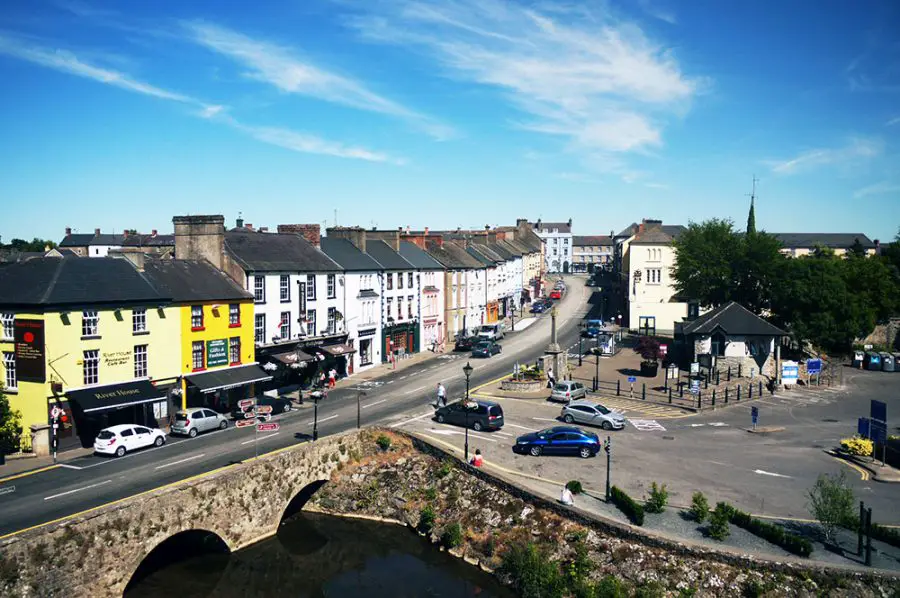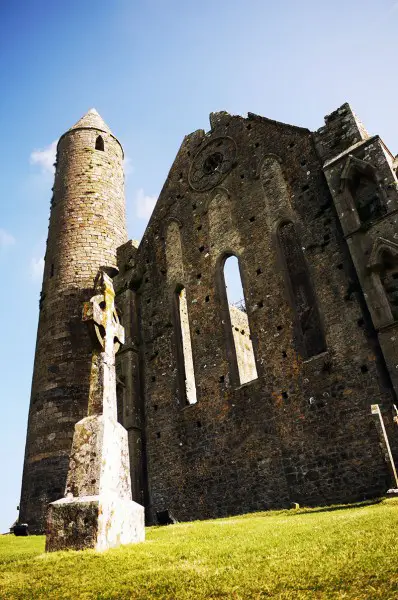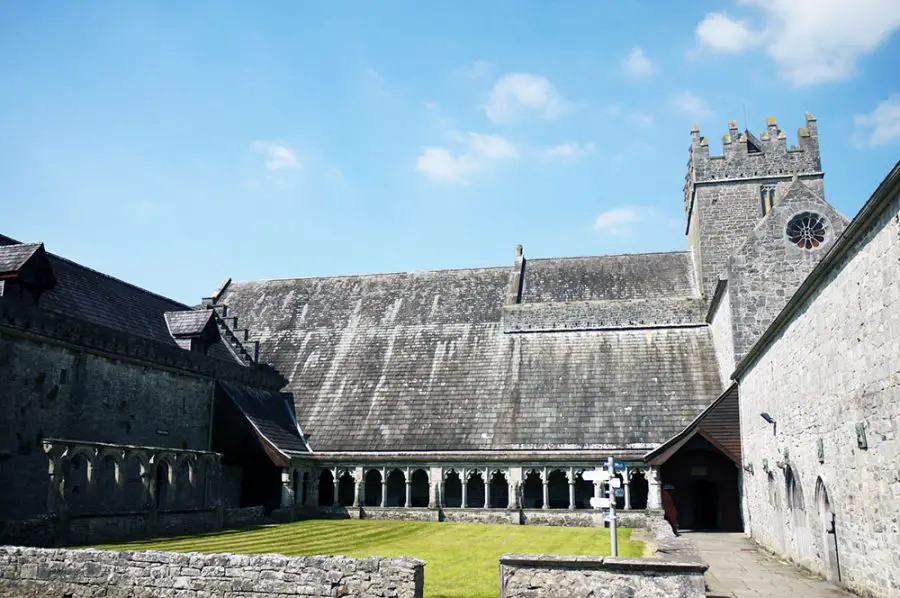Basing ourselves in Noelle’s family home in Thurles Co. Tipperary, we took a few day trips around the county, exploring all that the ‘home of hurling’ has to offer. As the sixth largest county in the country, there is no shortage of things to keep busy; lakes, castles, abbeys, hikes and more.
It seemed like everyone in Tipperary, Limerick and Clare had the same notions as us. With the Irish heat wave continuing, we went in search of somewhere to cool down and have a swim. Driving west from Thurles, we caught our first glimpse of Lough Derg from the road. I had completely underestimated the lake and was blown away when I saw the sheer size of it, stretching out for miles, complete with sailboats crossing its placid waters. The view from here was beautiful, little villages were visible around the lake shore and tiny islands were dotted around the interior of the lake.
On the Tipperary side of the Shannon, the town is Ballina, on the Clare side it’s Killaloe. Whichever name is goes by, we were headed there to find a spot for a swim in Lough Derg, Ireland’s second largest lake. Truth be told, we had romantic notions as to what a fine spot it would be for a swim, it looked a lot more peaceful from our earlier vantage point. Down here in the car park it was a different story and after finding a spot to leave the car we took our place on the grass with the masses. It makes sense that the water would be cold but we weren’t expecting the slimy algae and the painful rocks underfoot. Once we got a bit further out though it wasn’t so bad and brought some welcome relief on another scorching Irish summer’s day.
The next day it was off to South Tipperary to the town of Cahir. We wanted to hike the Galtee Mountains but the weather was too hot in the middle of the day so we hung around Cahir until the evening before heading off to hike Galtee More. Cahir town is probably most famous for Cahir Castle, built in the thirteenth century and is in great upkeep. The river outside runs down through the surrounding gardens and makes for a peaceful walk. At the end of the walkway is Cahir’s other major attraction, the Swiss Cottage. Honestly, we weren’t expecting much, we didn’t really know what to expect but we were pleasantly surprised. From outside you can’t see anything. The cottage is completely hidden from view, just one of its unique design features. The Butler family built the cottage in 1810 as a getaway from the castle and for entertaining guests. There are a bunch of different requirement which must be met in order for the cottage to qualify as an ornate cottage and this has them all. We even got lucky and had our own private tour as there was nobody else around. It was a surprising stop on our Tipperary tour but well worthwhile; a true Swiss Cottage hidden away in Co. Tipperary, who would have thought it!
From Thurles, two of the major attractions of Co. Tipperary are just a short drive away. The iconic Rock Of Cashel and the ancient Holycross Abbey. Arriving at the Rock Of Cashel, we were just in time to join a free tour and the guide was fantastic. Although sections of the building were closed off due to restoration works, it had hardly any impact on our tour. Twenty miles north from here is the Devil’s Bit Mountain, which we had hiked a few weeks previous. Local legends say that the Rock came to be when the devil came down from the sky and bit a chunk of the mountain and spat it out towards Cashel, where it landed, forming the hill where the Rock Of Cashel is located. This was the seat of the kings of Munster prior to the Norman Invasion and in 1101, the King of Munster donates the fortress on top of the rock to the church. Walking around the old buildings, seeing the old graves and the Celtic crosses and the detailed stonework in the roof of the abbey was amazing.
Driving back towards Thurles via the back roads we stopped off in one of the other major Tipperary landmarks, Holycross Abbey on the banks of the River Suir. It’s a beautiful, stone abbey with whitewashed walls inside and quite a colourful history. Some Irish celebrities have been married in the church but it is most famous as it contains a fragment of the true cross. In 1601, Prince Hugh Roe O’Donnell on his way to the Battle of Kinsale, visited Holycross and venerated a relic of the true holy cross. Holycross Abbey fell into ruins in 1632 after the Cromwellian war and locals used it as a burial-place, meaning it could no longer be used as a place of worship. In 1969, the Dáil, allowed the abbey to be used once again as a place of Catholic worship and the Sacristan of St. Pater’s Basilica in the Vatican gifted the abbey with an authenticated relic of the true holy cross. Unfortunately masked men raided the abbey in 2011 and stole two crosses, one containing the relic but in 2012 they were, thankfully, again retrieved.
Over the coming few weeks, before leaving for Korea, we would be up and down the road between Cork and Tipperary numerous more times to visit family and friends. With two hikes, a swim in Ireland’s second largest lake, a castle, a medieval fortress and an ancient abbey under our belts, our Tipperary sightseeing tour was complete, at least for now.

Brian is a travel writer, photographer, blogger, travel addict and adventure-junkie. Being outdoors, getting off the beaten track and outside his comfort zone is what makes him tick. Brian’s the dreamer in the relationship; when he’s not travelling, he’s dreaming about it! Keeping fit, cooking, music and red wine take up the rest of his time.
Sign up for our free travel photography Ebook "Faces of Nepal" and you'll also receive our monthly newsletter.









